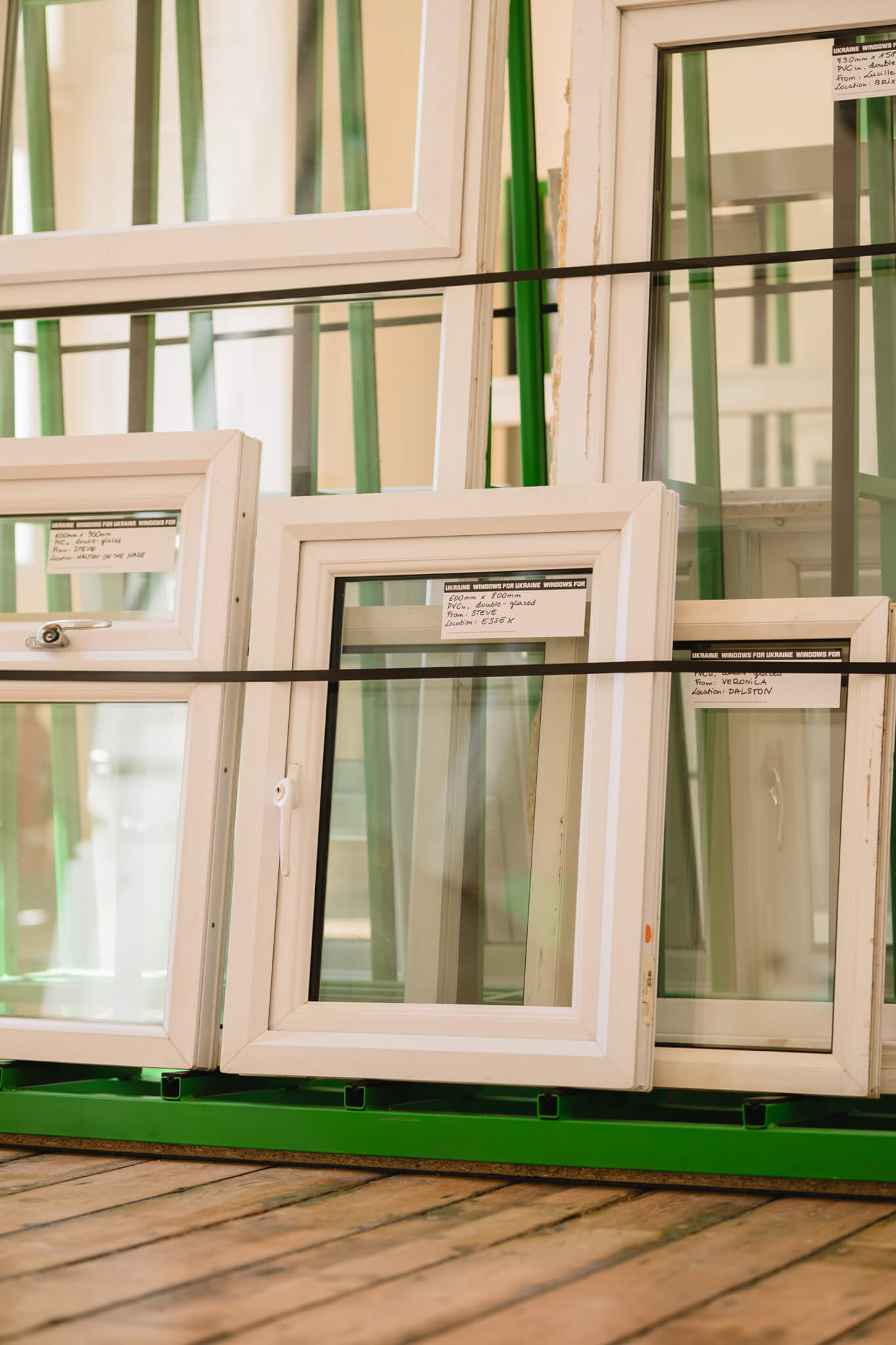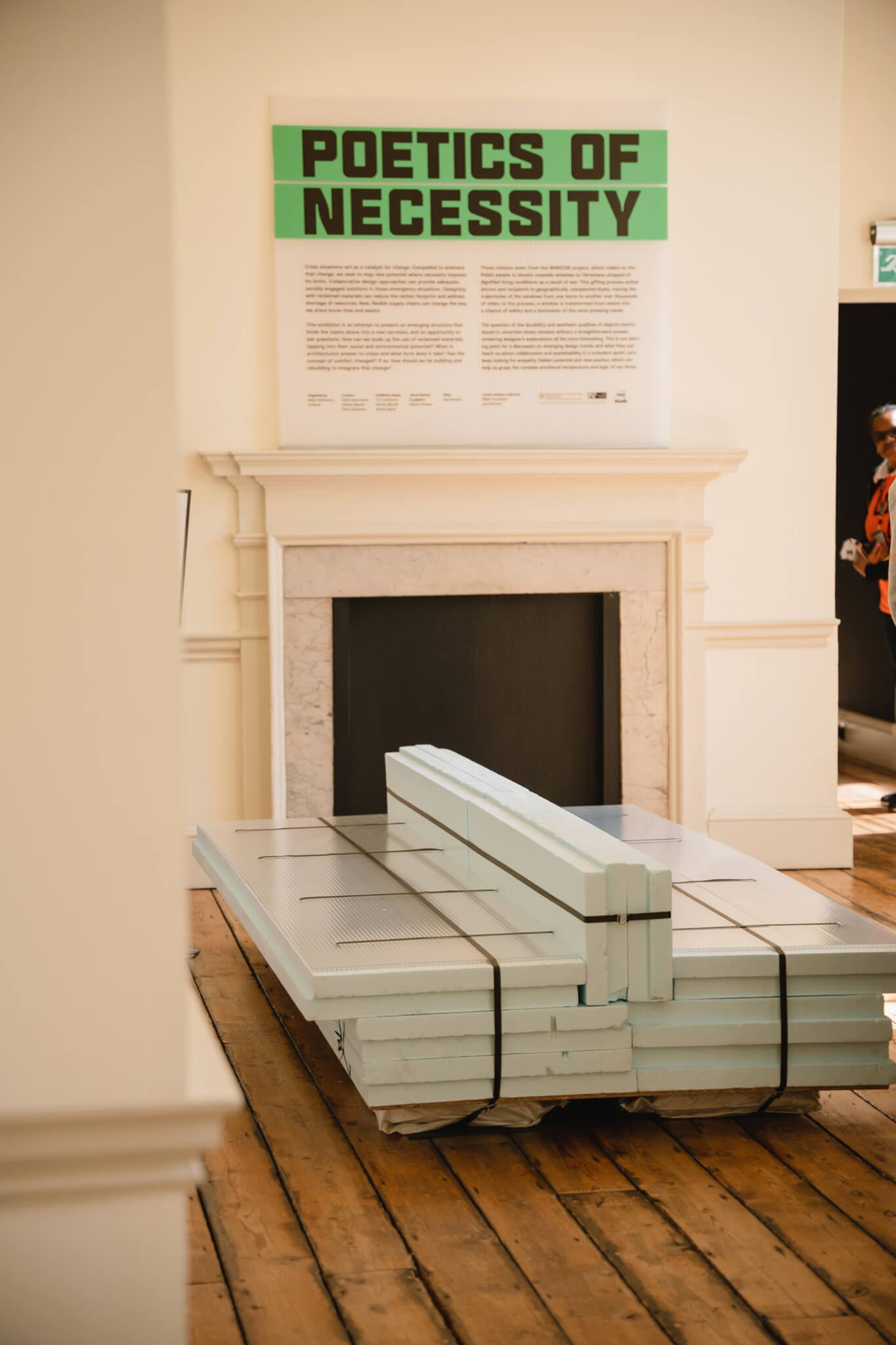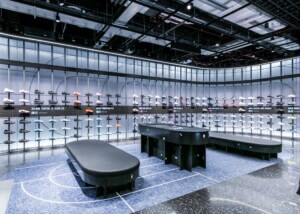For the month of June, London’s Somerset House finds borders carved through its 18th-century walls as the neoclassical complex becomes home to the London Design Biennale, and its East and West Wings are divided among over 40 nation states in the form of pavilions. Rotterdam’s Het Nieuwe Instituut is this year’s artistic director, led by Aric Chen, who states that “global challenges require global collaboration,” in reference to the 2023 theme The Global Game: Remapping Collaborations. But how do you collaborate within the strict confines of the national pavilion model? The system was built to showcase an individual nations’ achievements, invariably funded by government entities. It takes inspiration from the World’s Fair—first implemented at the now-archetypal Venice Art Biennale in 1895, it has been unquestionably replicated. To subscribe to such a model in 2023 seems to complicate aspirations of collaboration, and arguably does not “remap” in the ways that it could.
However, the Polish Pavilion looks to form new networks born of community and generosity with its contribution, The Poetics of Necessity. Its pavilion presents a snapshot of Fundacja BRDA’s ongoing WINDOW project, a show of solidarity and practicality from Poland as residents send reusable windows to Ukraine. Over 12,000 PVC windows—the cheapest and most durable version of that building element—have been donated by Poland since June 2022. The WINDOW project collaborated with community organizations on the ground to form networks of distribution, such as the District #1 Foundation, established before the war to regenerate areas of Old Kyiv. They’ve since shifted their focus to rebuild previously occupied parts of Ukraine that have been reclaimed. For example, the reclamation of Kherson was a key victory in 2022, and 56 percent of the windows collected that year were sent to the region.

Before the war, the majority of Ukraine’s windows were imported from Russia and Belarus, and the only glass factory in the country is located in the now-captured town of Lysychansk. Windows are usually the first building element to break in an explosion, so residents must then use makeshift methods to enclose their once safe homes with clingfilm, tea towels, or cardboard.
Back in London, curators Zofia Jaworowska, Michał Sikorski, and Petro Vladimirov have organized local donations, 15 of which now sit on crates in Somerset House’s East Wing. “We hacked the London Design Biennale to collect windows in London,” explained Jaworowska. ”It’s more of a symbolic action here to raise awareness of the project.” Labels recall standard warehouse stock-keeping stickers, detailing essential information such as size and format, but also the previous owners and locations—Steve in Essex, or Holly in Wembley, are part of the exhibition too.
The key inquiry of the pavilion is how these windows might be installed, and the material culture of such a strategy. The center of the exhibition is a 1:1 model, showing in detail how a PVC window can be installed into a too-short opening, by mounting it at an angle, and adding triangular MDF supports to the sides to secure and enclose it. It has its own aesthetic, extending out of the care and detail with which it has been produced: its own architectural language. Brought together in a DIY manual, the Polish pavilion presents nine mounting techniques that provide a range of solutions to common problems: poor thermal properties, partially damaged walls, or too-large openings. The designs bring light into these structures of scarcity—slanted windows create niches for shelves and window seats; designs for secondary glazing layers that increase thermal performance simultaneously create in-between spaces for cold storage. The material investigation offers lessons for other crises, too. In the face of climate breakdown, we must recalibrate global supply chains that underline and beget further crises. The need to build from what we already have, and adapt existing building fabrics for the future, is also necessary in peacetime.

An international exhibition of contemporary design cultivates implausible and imagined notions of worldliness that are only accessible to some. Not only do participants fly in from across the globe, but their labyrinths of installations are constructed by global flows of materials. Key ingredients of such exhibitions are sourced elsewhere: The majority of the U.K.’s sawn softwoods are imported from Sweden, while sheets upon sheets of plywood are shipped in from China and Brazil, and the nuts and bolts that hold it all together require iron and steel imports from Germany. It’s difficult to construct anything without partaking in these hypermodern import-export flows. The curators of the Polish Pavilion look to opt out of these networks, away from the need for the new. Jaworowska described the search for materials as looking for the “trashy,” “unattractive,” but “durable” products. This is linked to wider investigations into how we can design for reuse.
The entire exhibition, designed by co-curator Michał Sikorski’s practice TŁO, is built from raw components that can later return to building sites. Heavy duty plastic sheeting is strung up on scaffolding poles to form a curtain around a TV playing a video that gives an insight into the impossible conditions that grassroots organizations are working in to rebuild. To watch the video, visitors perch on a blue foam sofa made from standard lengths of extruded polystyrene insulation, secured by cable ties and sandbags and constructed with as few alterations to the raw materials as possible. The domestic motifs fashion a sense of home in unsuspecting forms. When the exhibition ends, it will all be taken apart and the materials reused. Here, waste is a beginning and an end.
We are today encased in a thick lattice of material flows, and so it is astounding that another transportation of matter between countries could be so radical. The hardened borders of the national pavilion model do not engender collaboration, but Poland’s contribution breaks open the rigid format and uses it as a platform to further already burgeoning networks of hope and solidarity that could supersede anachronist trade systems. The Poetics of Necessity uses the biennale format to the project’s own ends. “Warehouses located on the outskirts of a city are not the only storage options for large objects,” the curators note. “In fact, an exhibition space is equally adequate.”
Ellen Peirson is an architectural designer, writer and editor based in London.











